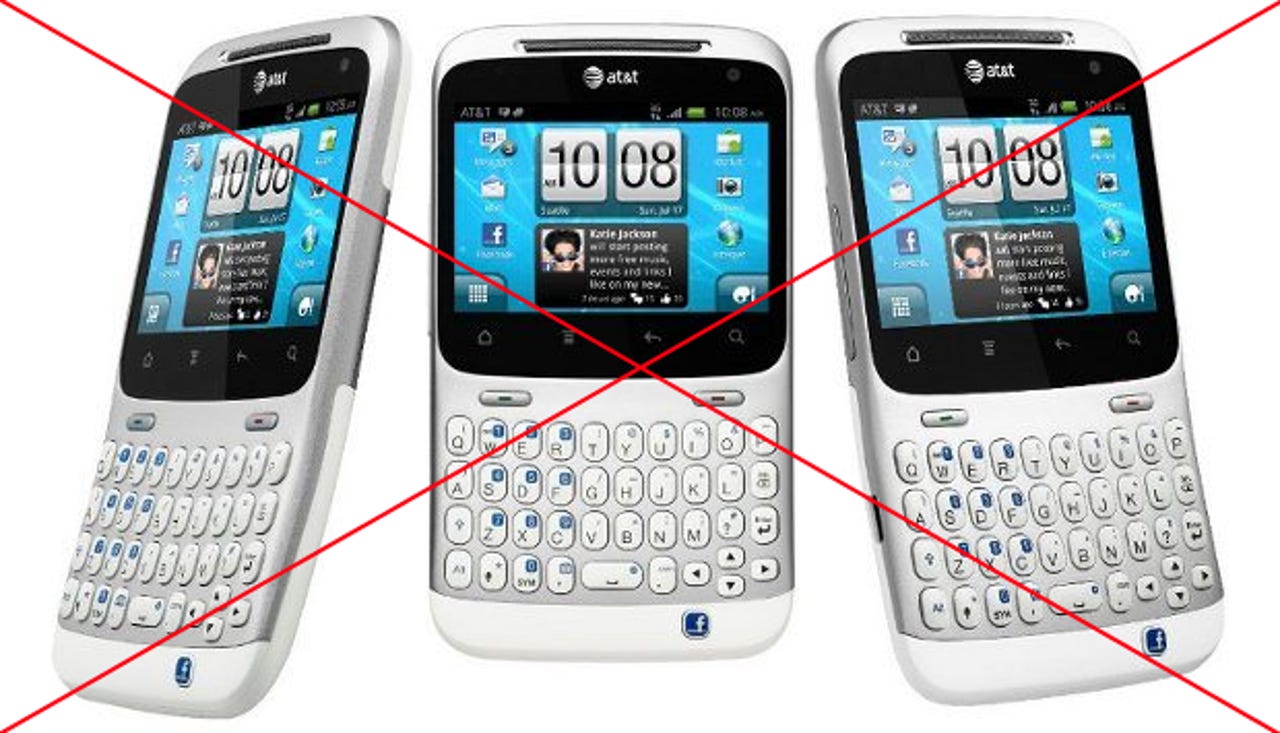Rumor: AT&T to kill its first Facebook phone, the HTC Status

Last month, AT&T started offering the HTC Status, the network's first device with a dedicated Facebook button. This month, AT&T is reportedly prepping to ditch the device, according to a trusted source close to AT&T cited by TechCrunch.
The reason is simple: the HTC Status is reportedly not selling. Sales are apparently much lower than both AT&T and HTC expected.
The HTC Status originally launched for AT&T on July 17, 2011, in time for the back-to-school shopping season. The price tag was $50 with a two-year contract (a minimum $15 data plan is required). Instead of playing with the pricing though, the carrier apparently wants to just kill the device altogether.
The HTC Status was first announced as the HTC Chacha back in February 2011. The device lets you share music, photos, location, and status updates via the dedicated Facebook button:
- Press the Facebook button from your home screen to instantly post on your wall.
- Take a picture or shoot a video and share it instantly with a press of the Facebook button. You can even post pictures automatically as you're taking them.
- Hold the Facebook button to check in your location with Facebook Places.
- See something cool on the web? Share your latest find with a quick press of the Facebook button.
- The Facebook button glows when playing music; press it to share what you're listening to.
The HTC Status also features a chat widget that allows you to see when your friends are online. You can start a live instant chat and juggle between as many private conversations as you want, all straight from the device. Furthermore, every time you get or make a call, you see your friend's profile picture and latest status update right on the call screen (if it's their birthday that week, you'll see that too).
Last but certainly not least, here are the technical specifications of the device:
- Platform: Android 2.3.3 (Gingerbread) + HTC Sense
- Display: 2.6-inch touch screen with 480 x 320 resolution
- Network: Quad-band GSM/GPRS/EDGE 850/900/1800/1900 UMTS/HSDPA 850/1900
- Memory: 512MB of RAM, 512MB of ROM
- Processor: MSM7227, 800 MHz
- Battery: Rechargeable lithium-ion battery, 1250 mAh
- Camera resolution: 5MP main camera with autofocus, VGA front-facing camera
Facebook's stance on devices like this one is that they are a prime example of a manufacturer using the company’s public APIs to innovate in the mobile space. Palo Alto won't let the Taiwanese mobile manufacturer (or any company for that matter) market any of them as "Facebook phones" but at the same time it hopes more similar Facebook-integrated devices.
If the HTC Status is indeed killed, the social network's public statements may quickly change. Either Facebook will distance itself further from unofficial Facebook phones, throw its some marketing muscle behind the next one, or simply keep quiet about the whole thing.
